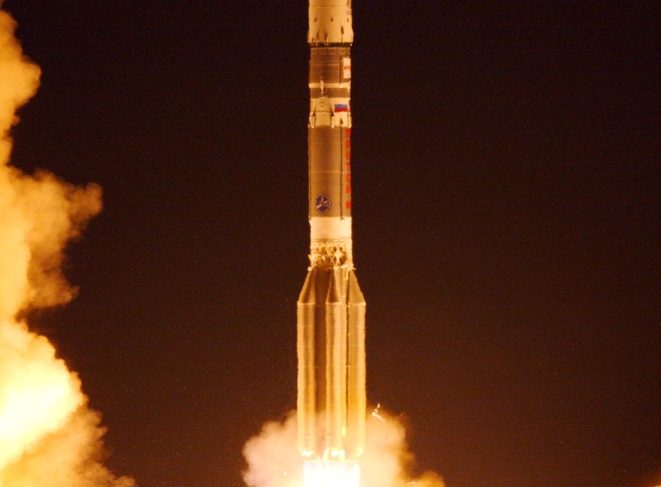
OTTAWA – Telesat announced the successful launch today of a new Anik G1 satellite from the Baikonur Space Center in Kazakhstan.
Anik G1 will be located at 107.3 degrees West providing a range of communications services, including carrying 16 extended Ku-band transponders contracted to Shaw Direct for 15 years. Shaw Direct currently uses Telesat’s Anik F1R satellite at 107.3 West for its Canadian DTH services. The addition of Anik G1 at the same orbital location means Shaw Direct will be able to add over 100 HD channels for their subscribers.
The new Anik G1 will also provide X-band for government applications in the Americas and Pacific Ocean Region, and C-band and Ku-band services in South America. It has three X-band transponders that are contracted to France-based Astrium Services for 15 years to support government applications across the Americas and much of the Pacific Ocean, including Hawaii. Its co-location with the Anik F1 satellite at 107.3 West will help double both the C-band and Ku-band transponders serving South America from this orbital location to help meet the growing demand for satellite communications services in this continent America.
“Anik G1 will add meaningful incremental capacity to Telesat’s fleet that will contribute to our anticipated growth in 2013 and beyond,” said Dan Goldberg, president and CEO of Telesat, in a statement. “We are pleased that a significant portion of Anik G1’s capacity is pre-sold for 15 years to blue chip customers like Shaw Direct and Astrium Services. We look forward to delivering to them the outstanding quality and reliability they have come to expect from Telesat and to expanding the C-band and Ku-band services we provide to the rapidly growing South American market.”
Anik G1 was launched on an ILS Proton Breeze M rocket from the Baikonur Space Center at 12:36 a.m. local time. The ILS Proton Breeze M was built by Russia’s Khrunichev State Research and Production Space Center and International Launch Services provided mission management.
Anik G1 was manufactured by Space Systems/Loral (SSL) and is based on SSL’s 1300 platform. The satellite has a mass of approximately 4,900 kg and an expected 15-year mission life. It will enter into commercial service after it has successfully completed orbit raising and comprehensive in-orbit testing.

Official launch photo courtesy International Launch Services.



